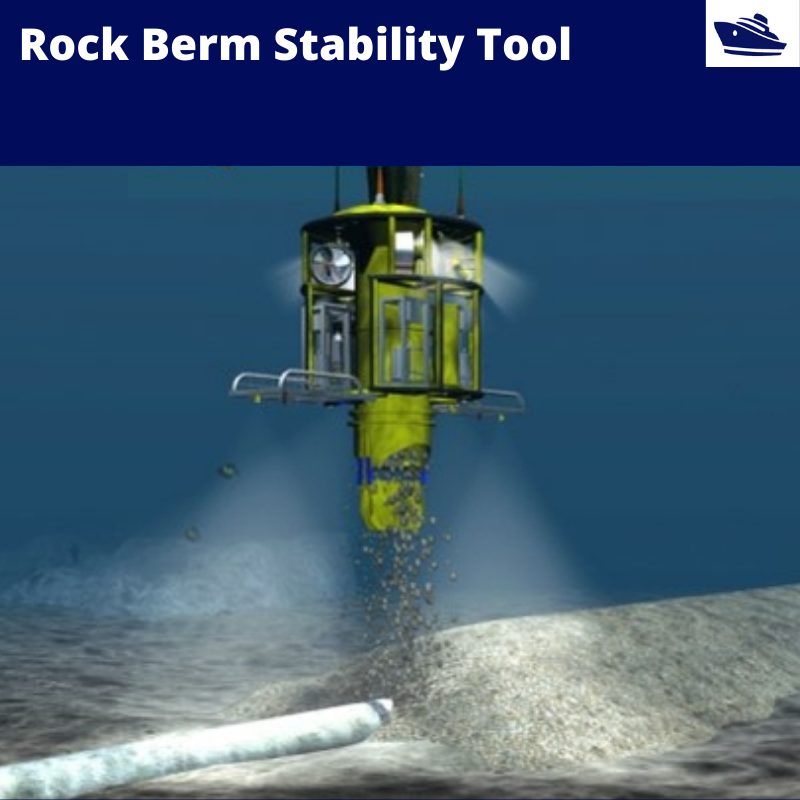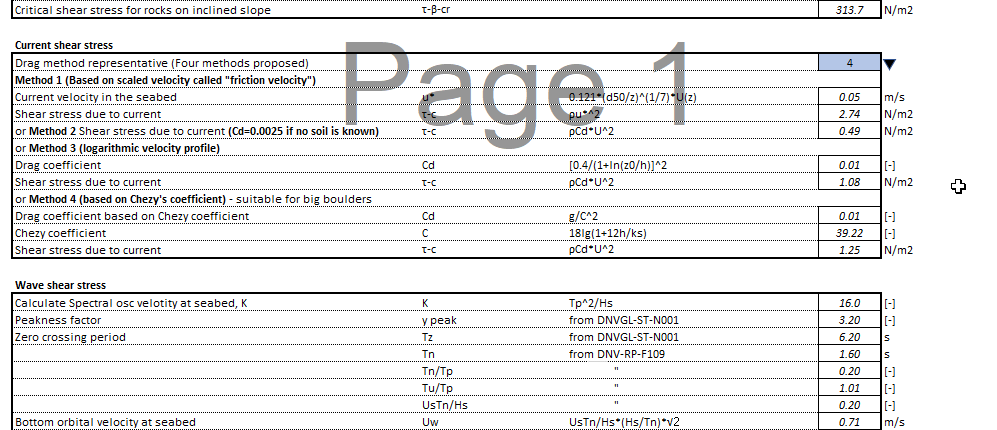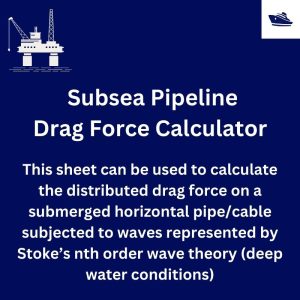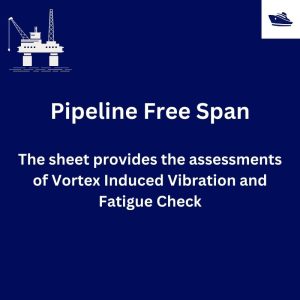Description
Brief Explanation
Based on theoretical assessments and industry guideline, this tool is developed to size the Rock particle size vis a vis, rock berm height, local water depth and
prevailing weather. This sheet can be parametrically used reversibly i.e. if a rock size is known , the limiting max height, limiting seastate etc. can be known.
Who can use this sheet?
This sheet is useful for Subsea contractors and asset owners interested in using rock berm stabilization method to protect their assets such as cables
and pipelines or seabed levelling using rockfill.
Motivation
There are many reasons why a rock berm is needed : protection of flowline/cables from extreme seastate or fishing / anchor drops where burial is not possible, crossing
of two lines, or even as breakwaters (subsea). The quantity of rock required is a challenge and often estimated from experience from submarine contractors. This may lead
to three risks
1 The contractor often uses same rock berm dimension for entire depth. For some depths it may be undersized, for other oversized.
2 Often large rock sizes are chosen without much consideration for capability of smaller sizes. This exposes cable to crush loads, abrasions and damage.
3 Overestimation /underestimation of rock berm material on board fallpipe vessels
Theory
Various researches are performed on this subject of determining the threshold of motions of a particular rock size. The most renowned literature on this subject are as follows:
– Soulby, R, 1997 : Dynamics of marine sands – a manual for practical applications
– CIRIA Rock Manual C683, 2007
This tool is developed based on the international paper “Stability of Rock Berm under Wave and Current Loading” by N.I. Thusyanthan, S Jegandan and DJ Robert, presented
at the Twenty Third (2013) International Offshore and Polar Engineering (www.isope.org) , Anchorage, Alaska, USA.
This paper by far gives the most streamlined understanding of the relation of rock size and density with respect to berm sizing and environment, utilising the knowledge
of standard literature. The approach is widely validated by the industry.
This paper reviews the fundamentals of threshold of motion and presents the importance of Shields parameter and Chézy coefficient in rock beam stability assessment.
Parametric study of seabed mobility (or rock berm stability) was undertaken for varying wave and current conditions
The method id based on 2D interpretation of rock berm and rocks on the slope.
How to use this sheet
For the evaluation of rock berm stability, which is a simple SIMPLE/UNSTABLE test using 2 methodologies (see theory above), the sheet takes following inputs from the user:
Environment parameters : Hs, Tp, Direction , Current velocity, current direction, Depth
Rock / seabed parameters : Rock block size, density, height of the berm, berm slope, cohesivity etc.
Drag calculation method : See the calculation sheet for the applicability of the method of drag to be used for the berm type
All entries are to be filled in
Limitation
This tool should not be used for systems outside its scope. Such as:
– if rock bags, filter units or geotextile bags are used for the stabilization
– land based or exposed rock berms , or berms exposed to wave breaking / slamming
– non – rock based protections such as mattresses
– backfills and mounds
– pipeline motions is disregarded. It is assumed that the pipe is buried deeply to cause any active movement of rocks because of this.
This requires FEM assessment in ABAQUS (detailed assessment)
– length and width of the Rock berm is not evaluated. This is a 2D tool. While the width should be greater than 5-6OD, user’s discretion is advised.
– Any other force (anchor drop) etc disturbing the Rock berm
Reference
1. Stability of Rock Berm under Wave and Current Loading by N.I. Thusyanthan, S Jegandan
2. DNV-ST-N001 : Marine operations and marine warranty 2018
3. DNV-RP-F109 : On-bottom stability of submarine pipelines







Reviews
There are no reviews yet